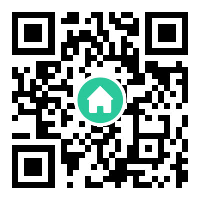Introduction to Telegram Bots
Telegram bots are automated programs designed to interact with users within the Telegram messaging platform. These bots leverage the Telegram Bot API to perform a wide range of tasks, from answering queries to managing groups and delivering real-time updates. Since their introduction in 2015, Telegram bots have become integral to enhancing user experience, offering functionalities that streamline communication, automate workflows, and even entertain. With over 700 million monthly active users on Telegram, the potential reach and utility of these bots continue to expand, making them a powerful tool for businesses, developers, and casual users alike.
Core Features of Telegram Bots
One of the standout features of Telegram bots is their versatility. They can be programmed to execute commands, send notifications, and integrate with external APIs. For instance, bots like @Weatherman provide weather forecasts by fetching data from third-party services, while @PollBot simplifies creating polls in group chats. Additionally, Telegram bots support inline queries, allowing users to access bot functionalities without leaving their current chat. This seamless integration, combined with support for rich media formats like images, videos, and documents, makes them adaptable to diverse use cases.

Another key advantage is their accessibility. Developers can build Telegram bots using popular programming languages such as Python, JavaScript, or PHP. The Telegram Bot API is well-documented, enabling even novice developers to create basic bots within hours. Furthermore, bots can be hosted on cloud platforms or local servers, ensuring scalability based on user demand. Features like webhooks allow real-time interaction, while bot-specific keyboards enhance user engagement by providing clickable response options.
Building a Telegram Bot: A Step-by-Step Overview
Creating a Telegram bot begins with registering it via @BotFather, Telegram’s official bot for bot creation. This process generates an API token, which authenticates the bot’s interactions. Next, developers design the bot’s logic using frameworks like python-telegram-bot or Telegraf.js. For example, a simple echo bot that mirrors user messages can be built in under 20 lines of code. Advanced bots may incorporate databases, machine learning models, or payment gateways for monetization.
Deployment involves configuring a web server to handle incoming updates via HTTPS. Platforms like Heroku or AWS Lambda simplify hosting, while services like Ngrok enable local testing. Post-deployment, bots can be promoted through Telegram channels, social media, or embedded directly into websites. Analytics tools like BotAnalytics help track performance metrics, such as user engagement and command usage, to refine the bot’s functionality over time.
Use Cases and Real-World Applications
Telegram bots are transforming industries by automating repetitive tasks and enhancing user interactions. In customer service, bots like @ShopBot assist users in tracking orders or resolving common issues, reducing response times. Educational bots, such as @QuizBot, deliver interactive quizzes and language lessons, making learning more engaging. Media organizations leverage bots like @NewsBot to push breaking news alerts, while crypto traders rely on @CryptoAlert for real-time market updates.
Gaming communities also benefit from bots like @GameBot, which host trivia contests or multiplayer games within chats. Nonprofits use donation bots to collect funds seamlessly, and developers employ CI/CD bots to monitor code deployments. Even individuals utilize personal assistant bots to manage schedules, set reminders, or curate content from RSS feeds. The flexibility of Telegram bots ensures they cater to both niche and mainstream needs.
The Future of Telegram Bots
As artificial intelligence advances, Telegram bots are poised to become smarter and more intuitive. Integration with NLP frameworks like ChatGPT enables bots to handle complex conversations, while image-generation tools like DALL-E allow for creative interactions. Monetization features, such as Telegram’s recent addition of in-app purchases for bots, open new revenue streams for developers. Moreover, increased adoption of blockchain technology could see bots facilitating crypto transactions or NFT management.
Privacy remains a priority, with Telegram’s end-to-end encryption ensuring secure bot-user interactions. Future updates may introduce enhanced customization options, cross-platform compatibility, and deeper integrations with IoT devices. As the ecosystem evolves, Telegram bots will likely play a central role in shaping the future of digital communication and automation.
In summary, Telegram bots represent a dynamic intersection of technology and utility. Their ability to adapt to user needs, coupled with Telegram’s growing popularity, ensures they will remain a vital tool for innovation in the years to come.












